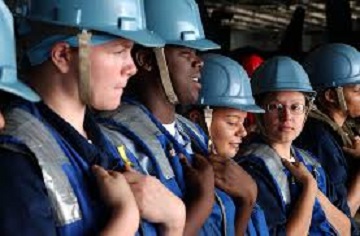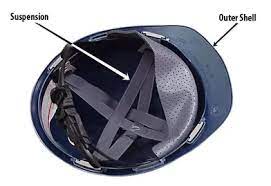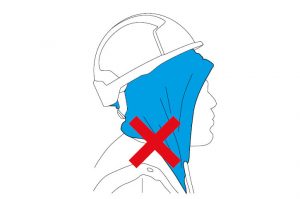When it comes to workplace safety, one of the most important pieces of equipment you can wear is a hard hat. Hard hats protect your head from potential injuries, and if worn correctly, can help keep you safe on the job. In this blog post, we will discuss the components of a hard hat, as well as the dos and don’ts of wearing one. We will also answer the question: which way does a hard hat face?
Table of Contents
- Components Of A Hard Hat
- Dos of Wearing A Hard Hat
- Tips For Making Your Hard Hat Fit Well
- Dont’s of Wearing A Hard Hat
- Hard Hat Cleaning, Storage and Long-Term Usage
- Conclusion
A hard hat is a type of personal protective equipment (PPE) that helps protect your head from injuries. Hard hats are made of tough materials, like plastic and metal, and they usually have a suspension system inside that helps absorb impact.
There are different types of hard hats for different purposes, but most hard hats worn on construction sites are designed to protect against falling objects and collisions. Hard hats must be properly fitted in order to work correctly, so it’s important to know how to wear one correctly.
Components Of A Hard Hat
Most hard hats have four main components:
- the shell

- the suspension
- the headband
- the sweatband.
The shell is the tough outer layer that protects your head from impact.
The suspension is the system of straps and pads that helps keep the hard hat on your head and absorbs shock.
The headband helps adjust the fit of the hard hat and keeps it in place.
The sweatband is a soft, absorbent layer that goes against your forehead and helps you stay comfortable while wearing the hard hat.
Dos of Wearing A Hard Hat
Hard hats are an important piece of safety equipment that can protect you from serious injuries in the event of a fallor collision. Make sure you know how to wear a hard hat correctly and inspect it regularly for any signs of damage. Follow these tips to stay safe on the job site.
Make sure it’s the correct type and class. Hard hats are available in a variety of forms and classes. Make sure you’re wearing the most appropriate type and class for your task.
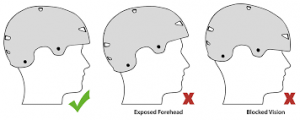
Choose a hardhat that is compatible with other PPE. Some hardhats have slots for additional PPE, such as safety goggles or face protection. Choose accessories that do not compromise the fit of the helmet.
Make sure it’s the right size. Make certain the sliding band, pin locks, ratchets, and/or tab locks are properly adjusted so that the hard helmet is comfortable yet not too tight that it causes discomfort or irritation.
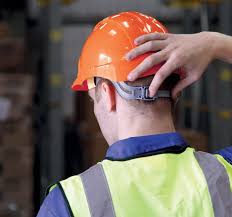
Inspect your hard hat before each use to look for any signs of damage, like cracks or dents.
Clean your hard hat regularly to remove dirt, dust, and other contaminants.
Adjust the suspension so that the hard hat sits level on your head.
Tips For Making Your Hard Hat Fit Well
Which way does a hard hat face?
The brim of a properly wornhard hat should always face forwards to protect your face from impact. Do not wear your hard hat backwards as it will reduce its protection level. You may only wear the hard hat backwards if it has a reverse donning symbol, which means there is no front or rear on the helmet.
Here are some tips for your hard hat fits well:
- There should be a minimum of 1/4 inch between the head and hard helmet. By adjusting the harness suspension, this may be achieved.
- Nothing irritates the scalp more than a tight fit. A little for airflow should exist between the internal suspension structure and the hard shell to prevent sweat build-up within your head and hair loss in the long run. You don’t want to be bald, right?
- Select hard helmets with a sliding adjustment to adjust the tightness of the hard hat for your head. The holes are generally 1/8 inch apart, and you must find the correct one associated with which the hard hat fits securely yet not too firmly to your head.
- The brim of the hard hat should face forward when worn. To put it another way, the hard hat’s brim should point toward the front.
Dont’s of Wearing A Hard Hat
There are also a number of important recommendations from the category of what not to do with a hard hat.
- Avoid wearing just any clothes as padding under your hard helmet merely to make your head feel comfy. Winter and summer liners are available specifically for this purpose. Wearing anything other than a winter or summer jacket will only raise the chance of injuries.
- Also do not wear hoody under your hard heat.

- Do not wear anything else on top of your hard hat, like a baseball cap or scarf. These can prevent the hard hat from sitting correctly on your head or interfere with the suspension system.
- Do not wear your hard hat in a way that it could fall off, like by perching it on the back of your head or neck
- Do not place objects in front of or behind the brim of your hard hat, as this can block your vision.
- Do not use paint, stickers, or other materials to decorate your hard hat, as this can damage the shell. Don’t leave it in the sun. It includes keeping it in a vehicle that’s parked outside. Sunlight can harm the shell and cause it to become brittle over time.
- Do not leave it in the sun.
Hard Hat Cleaning, Storage and Long-Term Usage
- Regular inspection of the hard hats.
Checking for any cracks, dents, or other damage. If you find any damage, replace the hard hat immediately.
- Cleaning the hard hats.
The best way to clean a hard hat is with a mild soap and water solution. Avoid using harsh chemicals, as they can damage the shell of the hard hat.
- Storing the hard hats properly.
When not in use, store your hard hats in a cool, dry place out of direct sunlight.
- Long-term usage of the hard hats.
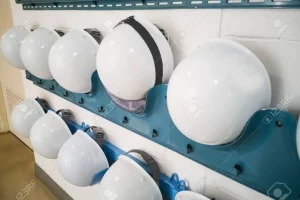
A properly worn hard hat can inspire confidence and help you feel safe while working. Hard hats are designed to last for several years, but you should inspect them regularly for any signs of damage. If you find any damage, replace the hard hat immediately.
Conclusion
This concludes our blog post on how to properly wear a hard hat. We hope that this has been helpful in teaching you the components of a hard hat, the dos and don’ts of wearing one, and which way the brim should face. Regular inspection of your hard hat is important to ensure that it is still in good condition and will continue to protect you in the event of a fall or collision. safe and injury-free.
Do you have any questions about how to wear a hard hat? Let us know in the comments below!
